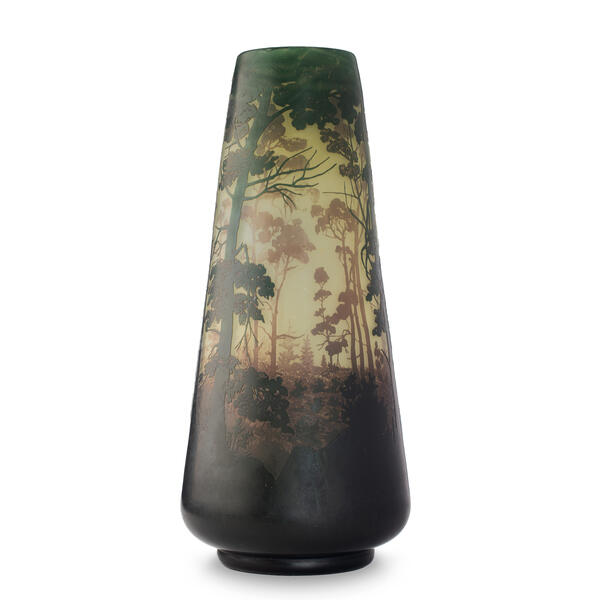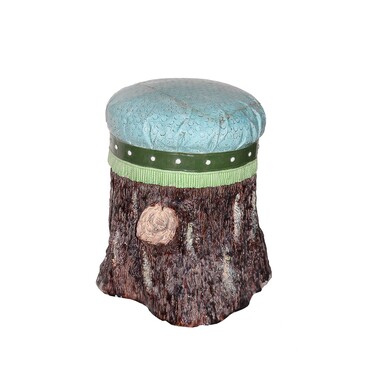The vase “Russian Forest” from the museum collection was produced at the Gus Crystal Factory in the early 20th century. The manufacturer is indicated by the artist’s stamp on the vase. It was created using the technique of multi-layered glass art, which is similar to that used by Émile Gallé, a French artist of the Art Nouveau movement.
It was Émile Gallé who came up with the idea of treating multi-layered glass with acids and dyes, using metal oxides, gold and silver foil. This allowed craftsmen to achieve an exceptional depth of image and richness of color.
The technical innovations of Émile Gallé gained popularity in the Russian Empire. This technique was actively used in the manufacturing of glass products at the factory in Gus-Khrustalny. Founded in 1756 by the Russian industrialist Akim Vasilyevich Maltsov, the enterprise had extensive experience in creating crystal and glass products.
In 1880, Yury Stepanovich Nechaev, a translator, diplomat, and philanthropist, became the owner of the factory. Upon inheriting the company, he adopted the family name of his maternal uncle and became known as Yury Nechaev-Maltsov. Over three decades, he managed to extend the production line by introducing advanced methods of crystal processing, including the above-mentioned technique by Émile Gallé, iridizing for a pearl finish, millefiori craft for a mosaic effect, and luster for a metallic or pearl finish.
At the turn of the 20th century, the factory was Russia’s leading enterprise with respect to its variety of techniques and methods for decorating crystal products. It was equipped with the most advanced tools of its time and used both Russian and imported materials. The Gus Crystal Factory has always stayed relevant by quickly embracing and implementing technical and stylistic innovations from around the world.



